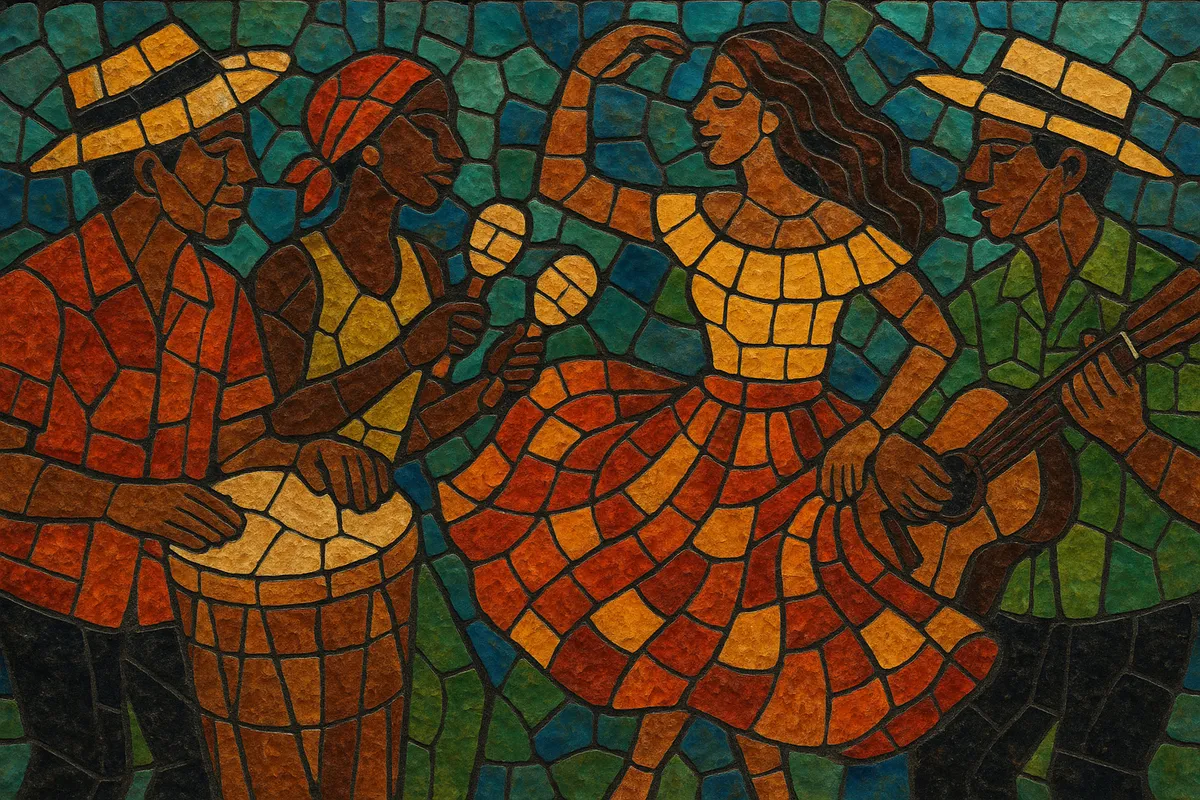Carimbó is a vibrant Afro-Indigenous dance-music tradition from the Brazilian Amazon, especially the state of Pará. It revolves around the curimbó (a large, hollowed-log drum played with hands), shaker-like maracas, and call-and-response vocals that invite dancers into a lively circle.
Rhythmically, carimbó features a syncopated, propulsive groove—often felt in two—with accents that recall older Afro-Atlantic dances like lundu while carrying strong Indigenous Amazonian drumming aesthetics. Melodies are catchy and diatonic, harmony is simple and functional (frequently I–IV–V), and lyrics celebrate love, nature, rivers, festivities, and everyday Amazonian life—often mixing Portuguese with regional Indigenous words.
Modern ensembles may add guitar, bass, sax/clarinet, and keyboards, but the essence remains percussive and communal: a festive, courtship-oriented dance where skirts swirl and partners trade playful steps.
Carimbó emerged in the Amazonian region around present-day Pará, Brazil, as a fusion of Indigenous (notably Tupi-speaking) drumming and dance customs with the musical practices of enslaved and free Afro-descendant communities. By the 1800s it had recognizable features—large hand-played drums (curimbó), circular dances, and call-and-response singing—closely related to Afro-Atlantic forms such as lundu, yet distinctively shaped by local Amazonian culture.
In the early to mid-20th century, carimbó flourished in community festivals and neighborhood parties around Belém and coastal towns. Informal ensembles standardized instrumentation around curimbó, shakers, reco-reco, and voices, while the dance acquired well-known steps and playful, courtship-oriented gestures.
Carimbó began to be recorded and broadcast more widely from the 1950s. Masters such as Verequete (with Conjunto Uirapuru) helped define canonical repertoires and performance styles. In the 1970s, Pinduca earned the nickname “Rei do Carimbó” (King of Carimbó), modernizing arrangements with guitars, horns, and a stronger backbeat while keeping the core drum-driven pulse. The Amazon’s porous musical exchanges with the Caribbean also fed contemporary variants that nodded to calypso and merengue.
Carimbó’s kinetic beat influenced later Amazonian phenomena (e.g., lambada’s regional roots) and coexisted with scene neighbors such as guitarrada and, later, tecnobrega. In the 2000s–2010s, artists like Dona Onete brought renewed national and international attention, presenting carimbó chamegado (a tender, swaying variant) on global stages. In 2014, Brazil’s IPHAN recognized carimbó as Intangible Cultural Heritage, bolstering preservation and community-led transmission.
Contemporary carimbó thrives in community groups, educational projects, and festivals throughout Pará. While many bands use modern amplification and add guitars, bass, and reeds, the repertoire remains rooted in the curimbó drum’s heartbeat, communal singing, and a dance that centers joy, courtship, and celebration of Amazonian identity.


